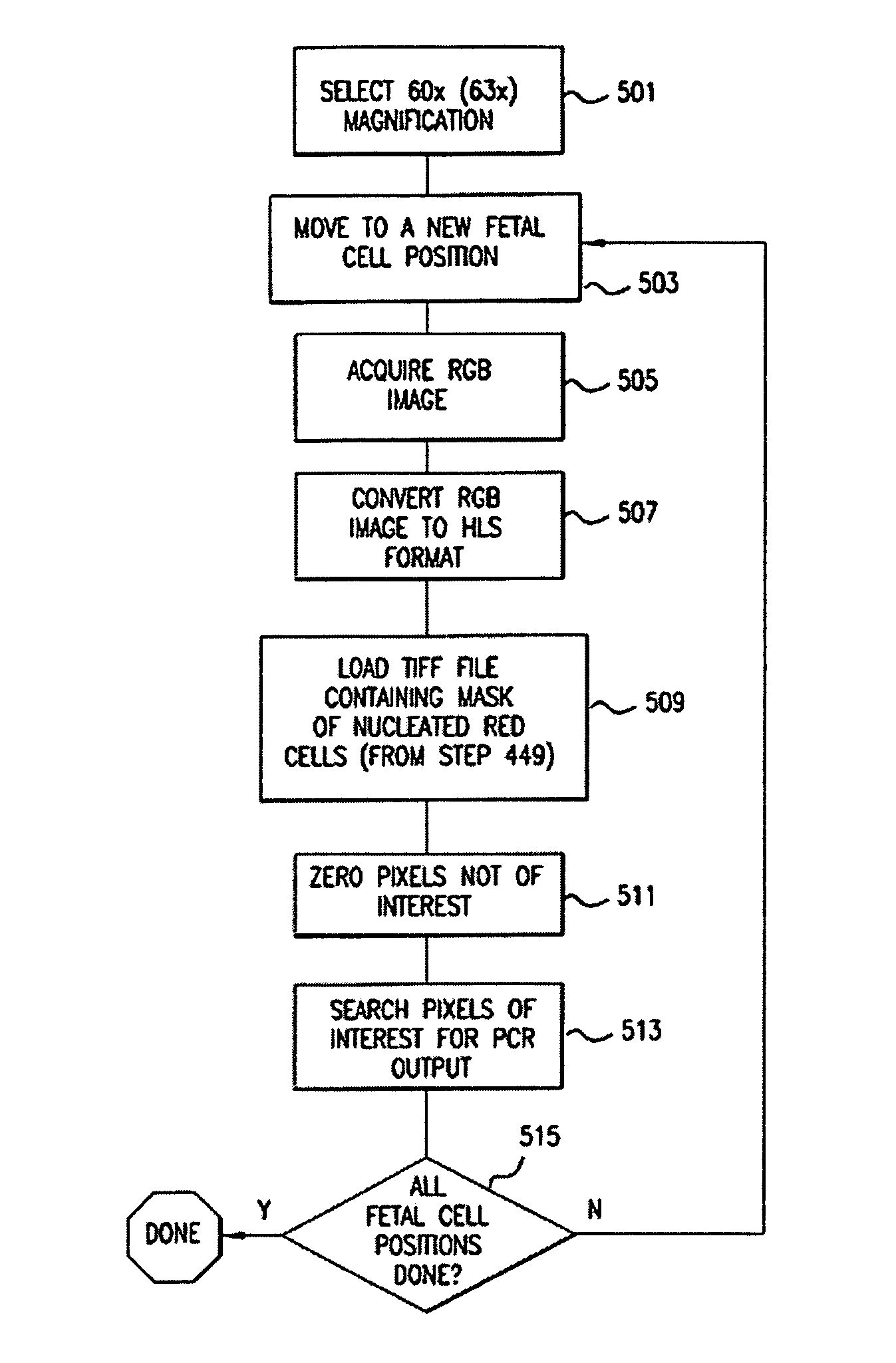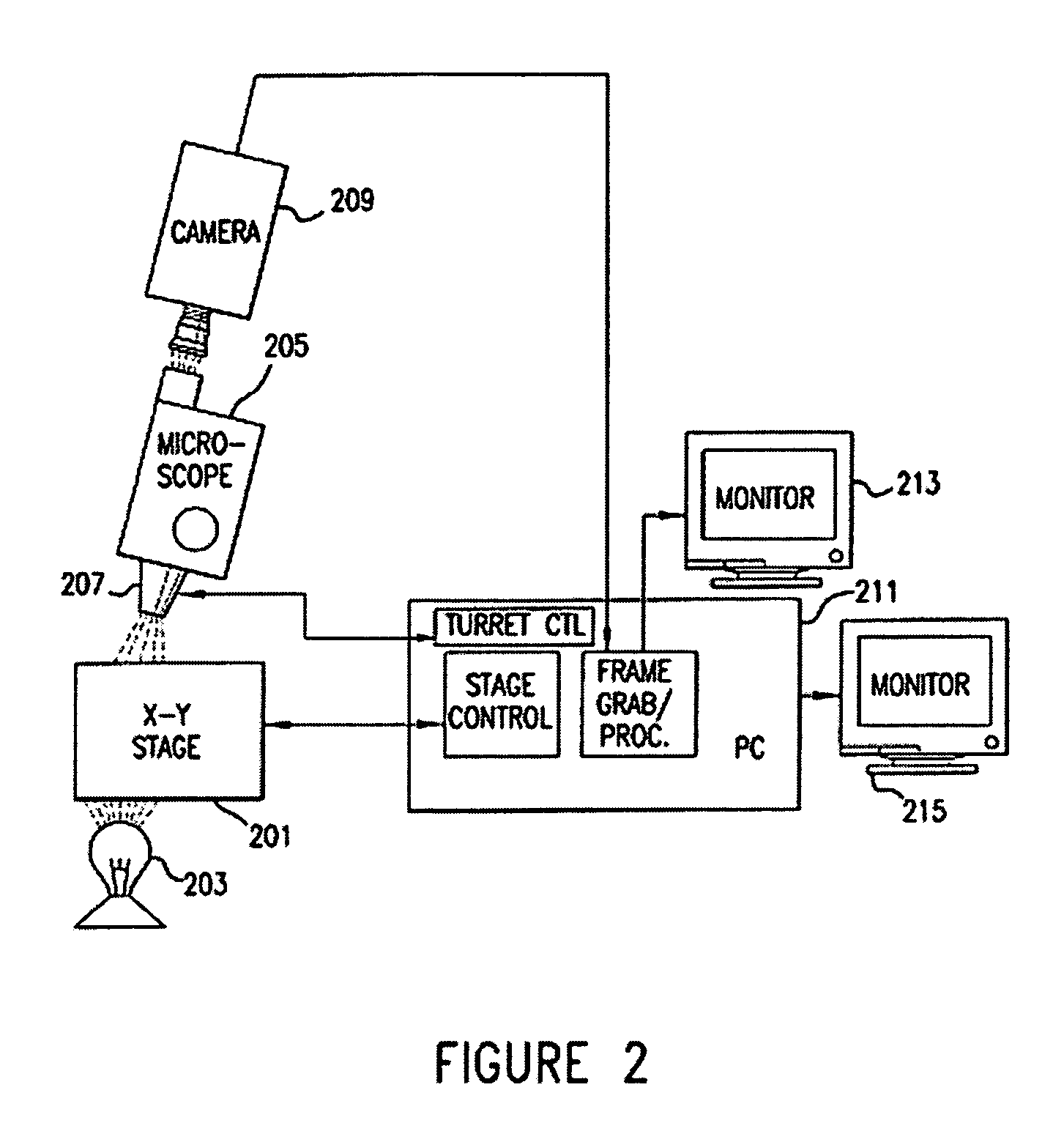Method and apparatus for computer controlled rare cell, including fetal cell, based diagnosis
a computer controlled, rare cell technology, applied in the field of rare cell computer controlled rare cell computer controlled, including fetal cell, can solve the problems of high specialized procedures carrying a small, but significant, risk to the fetus, low number of cells obtained, etc., to minimize the time and minimize the time
- Summary
- Abstract
- Description
- Claims
- Application Information
AI Technical Summary
Benefits of technology
Problems solved by technology
Method used
Image
Examples
Embodiment Construction
[0045] The invention will be better understood upon reading the following detailed description of the invention and of various exemplary embodiments of the invention, in connection with the accompanying drawings. While the detailed description explains the invention with respect to fetal cells as the rare cell type and blood as the body fluid or tissue sample, it will be clear to those skilled in the art that the invention can be applied to and, in fact, encompasses diagnosis based on any rare cell type and any body fluid or tissue sample for which it is possible to create a monolayer of cells on a substrate.
[0046] Body fluids and tissue samples that fall within the scope of the invention include but are not limited to blood, tissue biopsies, spinal fluid, meningeal fluid, urine, alveolar fluid, etc. For those tissue samples in which the cells do not naturally exist in a monolayer, the cells can be dissociated by standard techniques known to those skilled in the art. These techniqu...
PUM
| Property | Measurement | Unit |
|---|---|---|
| pH | aaaaa | aaaaa |
| pH | aaaaa | aaaaa |
| microscopy | aaaaa | aaaaa |
Abstract
Description
Claims
Application Information
 Login to View More
Login to View More - R&D
- Intellectual Property
- Life Sciences
- Materials
- Tech Scout
- Unparalleled Data Quality
- Higher Quality Content
- 60% Fewer Hallucinations
Browse by: Latest US Patents, China's latest patents, Technical Efficacy Thesaurus, Application Domain, Technology Topic, Popular Technical Reports.
© 2025 PatSnap. All rights reserved.Legal|Privacy policy|Modern Slavery Act Transparency Statement|Sitemap|About US| Contact US: help@patsnap.com



